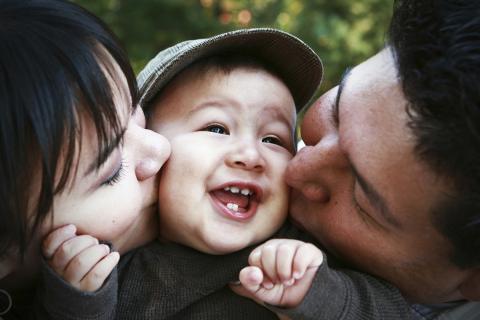Baby Teeth Link Autism and Heavy Metals, Study Suggests

Baby teeth from children with autism contain more toxic lead and less of the essential nutrients zinc and manganese, compared to teeth from children without autism, according to a study funded by NIEHS. The researchers studied twins to control genetic influences and focus on possible environmental contributors to the disease.
The findings, published June 1 in the journal Nature Communications, suggest that differences in early-life exposure to metals, or more importantly how a child’s body processes them, may affect the risk of autism.
The differences in metal uptake between children with and without autism were especially notable during the months just before and after the children were born. The scientists determined this by using lasers to map the growth rings in baby teeth generated during different developmental periods.
The researchers observed higher levels of lead in children with autism throughout development, with the greatest disparity observed during the period following birth. They also observed lower uptake of manganese in children with autism, both before and after birth.
The pattern was more complex for zinc. Children with autism had lower zinc levels earlier in the womb, but these levels then increased after birth, compared to children without autism.
The researchers note that replication in larger studies is needed to confirm the connection between metal uptake and autism.
“We think autism begins very early, most likely in the womb, and research suggests that our environment can increase a child’s risk. But by the time children are diagnosed at age 3 or 4, it’s hard to go back and know what the moms were exposed to,” said Dr. Cindy Lawler, head of the NIEHS Genes, Environment and Health Branch. “With baby teeth, we can actually do that.”
The method of using baby teeth to measure past exposure to metals also holds promise for other disorders, such as attention deficit hyperactivity disorder. “There is growing excitement about the potential of baby teeth as a rich record of a child’s early-life exposure to both helpful and harmful factors in the environment,” said Dr. David Balshaw, head of the NIEHS Exposure, Response and Technology Branch, which supported the development of the tooth method.
